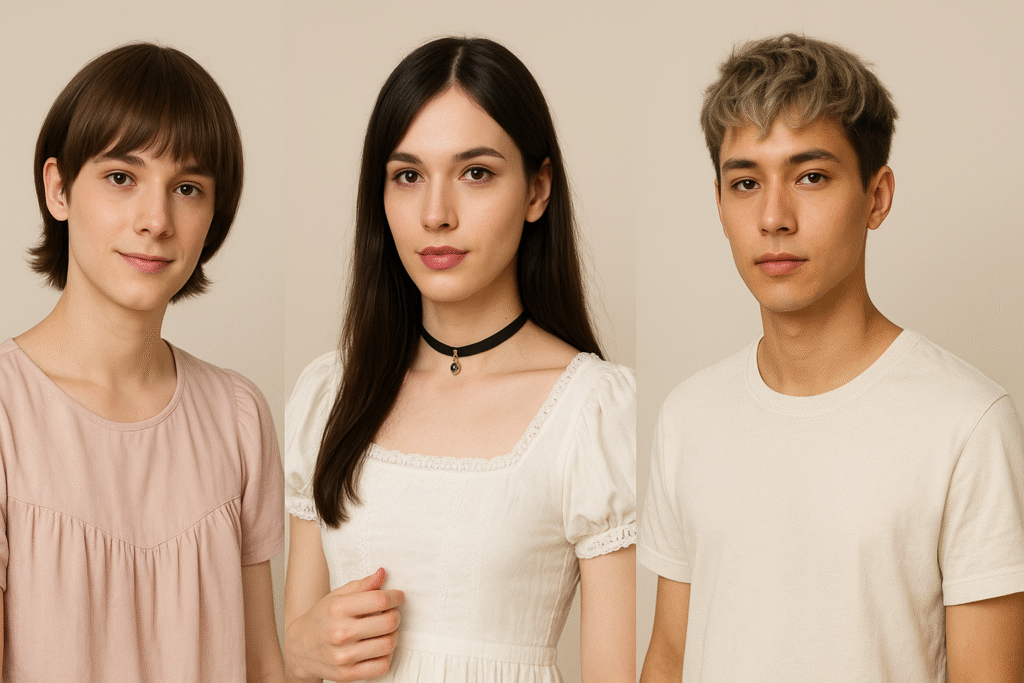In today’s world, gender expression and identity are more diverse than ever. Words like femboy, trans, and androgynous often appear in online conversations — but they don’t mean the same thing.
Understanding the differences helps promote respect and inclusivity, especially in communities where self-expression and identity are central. Let’s explore what these terms really mean and how they differ.

Femboy?
A femboy is typically someone who was assigned male at birth but chooses to express themselves in a feminine way. This might include wearing skirts, makeup, or cute clothing, and adopting gentle or feminine behaviors — but most femboys still identify as male.
Many femboys enjoy blending traditional gender styles. They might not want to transition or change their gender — they simply feel confident and authentic expressing femininity while being male.
The word femboy is often used positively within LGBTQ+ and online spaces, but it should always be used respectfully and with consent.
What Is a Trap?
The word trap comes from Japanese anime and gaming culture, where it originally described a male character who looks completely like a girl. It’s often used as a joke or plot twist when a character’s gender surprises viewers.
However, in real life, calling someone a trap can be offensive. It suggests that the person is trying to “trick” or “deceive” others — which is disrespectful and harmful, especially toward transgender or feminine-presenting people.
What Is Androgynous?
The term androgynous means a mix of both masculine and feminine traits — or sometimes neither. It describes a gender-neutral or balanced look that blurs the line between traditional gender roles.
Unlike femboy or trap, which are usually linked to male expression, androgynous can apply to any gender identity.
Examples of androgynous people:
A woman with short hair, minimal makeup, and gender-neutral clothing
A man with soft facial features and unisex fashion style
Non-binary individuals who embrace both masculine and feminine looks
Androgyny is popular in fashion, modeling, and art because it challenges traditional gender expectations.
What Does Trans Mean?
The term trans (short for transgender) refers to someone whose gender identity is different from the sex they were assigned at birth.
For example:
A person assigned male at birth who identifies and lives as a woman is a trans woman.
A person assigned female at birth who identifies and lives as a man is a trans man.
Unlike femboys, transgender people experience a change in gender identity, not just expression. Many trans individuals transition socially, medically, or both, to align their gender presentation with their identity.
Key difference:
Femboy = male identity + feminine expression
Trans = gender identity that differs from assigned sex
Both deserve respect and recognition, but they are not the same.

Why These Differences Matter
Understanding the difference between femboy, trap, and androgynous isn’t just about language — it’s about respect and inclusivity.
When we use words correctly:
- We respect how people define themselves.
- We avoid stereotypes or offensive assumptions.
- We create a safer, more open-minded online community.
Everyone deserves to express themselves freely — whether that means being feminine, masculine, or somewhere in between.
Gender expression is diverse and beautiful. Whether you identify as a femboy, enjoy androgynous fashion, or simply appreciate the art and culture around these terms, the key is to be respectful and embrace authenticity.
As language and culture evolve, so does the way we talk about identity. Learn, listen, and stay kind — that’s the real difference that matters. As society evolves, so does our language. Keep learning, stay open-minded, and celebrate the freedom to be yourself — no labels required.